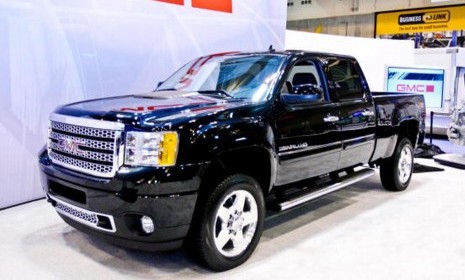Why is GM profitable again? 5 Theories
GM's gone from an embarrassing U.S. bailout to its first profit in years — and commentators have no shortage of explanations

Just a year after General Motors' humiliating slide into bankruptcy and 61 percent U.S. government ownership, the former No. 1 automaker actually turned a profit — its first since 2007. GM earned $865 million in the first quarter, compared with a $6 billion loss a year earlier, and even had a $1.2 billion operating profit in the troubled North American market. How did the disgraced Detroit icon go from bailout to profitability in one short year? (Watch a Reuters report about GM's recovery.) Here are five theories:
1. GM made the best of bankruptcy
GM's "slim" but better-than-promised profit "means the bankruptcy did what was intended," says Todd Lassa at Motor Trend. GM used Chapter 11 to shed four brands — Saturn, Pontiac, Saab, and Hummer — plus dealerships, workers, and production capacity. Shrunk to a leaner, "manageable size," GM is a global contender again, and its "health looks good," even when fewer people are buying cars.
The Week
Escape your echo chamber. Get the facts behind the news, plus analysis from multiple perspectives.

Sign up for The Week's Free Newsletters
From our morning news briefing to a weekly Good News Newsletter, get the best of The Week delivered directly to your inbox.
From our morning news briefing to a weekly Good News Newsletter, get the best of The Week delivered directly to your inbox.
2. It was able to slash its debt
Bankruptcy also let GM "shed a mountain of debt," says Tom Walsh at the Detroit Free Press, which reduced its "interest expense" payments by a whopping 72 percent, saving it $893 million since the first quarter of 2009. "That gain alone is more than the entire GM first-quarter 2010 profit" — and this Chapter 11 "windfall won't happen again."
3. Toyota's bad luck was GM's fortune
It's worth noting that "GM achieved its profits at a time when the No. 1 Japanese carmaker was taking a giant hit to its reputation for quality," says Megan McArdle in The Atlantic. Even with Toyota's woes, though, GM actually lost a bit of U.S. market share from a year earlier — partly due to axing Pontiac and the other three brands. And while it sold more cars, 31 percent of U.S. sales were commercial and rental fleet vehicles, which deliver less profit.
A free daily email with the biggest news stories of the day – and the best features from TheWeek.com
4. Creative accounting probably played a role
GM polished up its balance sheet by "cleverly pushing money around," suggests Drea Knufken at Business Pundit. Wise move, says Jesse Snyder in Automotive News: GM needs strong first-quarter numbers, since the only "plausible path for a quick GM recovery" is to "post a couple quarterly profits, gain investor confidence, go public in the fourth quarter, and use the IPO funds to buy out the feds."
5. GM is actually making cars and trucks people want to buy
GM's "new vehicles, if not best in class, are near best in class," says Plante & Morgan analyst Craig Fitzgerald. Despite all the "reasons to doubt whether GM's traction is for real," the numbers don't lie, says Daniel Howes in The Detroit News. The average incentive spending dropped from $5,000 to $3,000 per vehicle and "dealers report shortages of hot, well-equipped models like the Chevy Equinox crossover...." The U.S. wasn't alone: GM sales doubled in China and grew robustly in Brazil.
-
 Who is paying for Europe’s €90bn EU loan?
Who is paying for Europe’s €90bn EU loan?Today’s Big Question Kyiv secures crucial funding but the EU ‘blinked’ at the chance to strike a bold blow against Russia
-
 Quiz of The Week: 13 – 19 December
Quiz of The Week: 13 – 19 DecemberQuiz Have you been paying attention to The Week’s news?
-
 What’s causing the non-fiction slump?
What’s causing the non-fiction slump?In the Spotlight Readers are turning to crime fiction, romantasy and self help books as a form of escapism